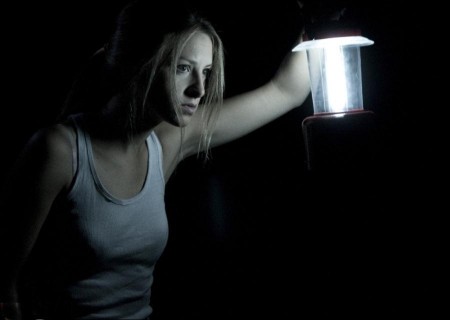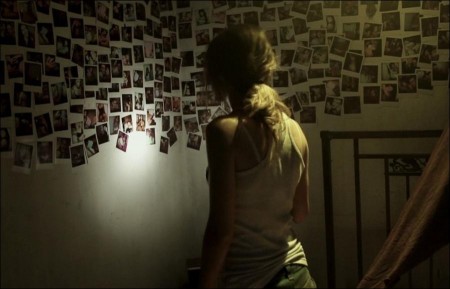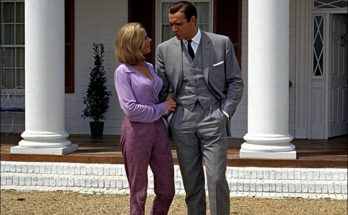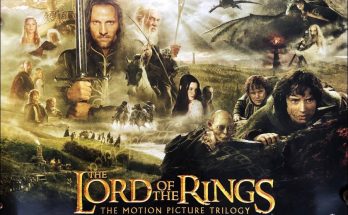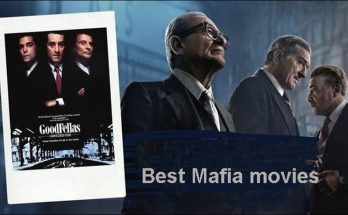Ambitious Beginnings at Silent House. The art of cinematic frights is one that has been refined over the last century. Filmmakers have adapted to an evolution of storytelling techniques and tools to deliver heightened suspense – editing, visuals, atmosphere and sound effects, it’s a strenuous manipulation of various factors to set an audience on the edge of their movie theater seat.
Strip away some of those principle accoutrements of scare-making, however, and you have SILENT HOUSE. A re-imagining of the Uruguayan film LA CASA MUDA, SILENT HOUSE cleverly deconstructs our perception of how one makes a taut, unnerving thriller in real time.
Akin to Alfred Hitchcock’s 1948 film ROPE, SILENT HOUSE is told in a continuous camera shot, following Sarah (Elizabeth Olsen) and the horrifying ordeal she encounters at a summer home over the course of an evening. Where Sarah goes, the camera follows…and so does the audience as she tries to make sense of memories from her past and the mysterious figure stalking her.
Taking on this unique challenge are directors Chris Kentis and Laura Lau, a duo no stranger to projects calling for tricky production preparation. In 2004, they tackled the shark-infested OPEN WATER. Through SILENT HOUSE producer Agnès Mentre, Kentis and Lau became acquainted with LA CASA MUDA and, together, they jumped at the possibilities an English-language remake presented.
“We were impressed these filmmakers came up with an interesting way to execute their story,” says Kentis, “but we wanted to try a few different things with our film. We were really excited about the idea of doing something in a single shot. For a filmmaker, that is big – taking on a new challenge like this and telling a story in this way. You don’t get many chances to do something like that.”
Once committed to the project, the pair began to deviate from the original film beginning at ground zero: The script. Lau took on writing duties and began intensive research after seeing LA CASA MUDA. “The original was based on a true story that took place in the 1940s in a village in Uruguay,” Lau explains, “there was this house and three bodies were found mutilated and incest was involved. The first question I asked myself is what happened, who was involved and why? Incest is a very difficult subject matter, The original stayed away from it, but I felt it was important to be accurate about what would motivate Sarah’s actions. It’s an extremely serious worldwide problem and it was very very painful for me as I researched and read extensively on the subject.”
Lau elaborates, “What this film is actually about is a portrait of a woman trapped in trauma. When such horrific secrets are suppressed, it leaves the victim caught in a terrible place. When a young person is abused, they don’t have well developed defense mechanisms and in order to survive the overwhelming fear, some victims fragment their identity in order to protect parts of themselves.
I was trying to find a way to visually translate the psychological impact of this type of abuse so I studied Dissociative Identity Disorder. I worked especially with a book by Donald Kalsched called “The Inner World of Trauma” which is about Jungian archetypal defenses which is rich with imagery.” Lau continues, “Telling this particular story in one continuous shot really made it possible to be intimately bound to Sarah’s damaged experience of reality and her terror. Shooting in real time actually allowed us to play with time and memory in a way that corresponded with Sarah’s fragmented realities.”
Kentis interjects, “The things that matter most about the movie are hard to talk about because we don’t want to spoil the ending for our viewers.”
Beyond the core themes of the story – something the directors prefer to keep hush-hush – what SILENT HOUSE allowed Kentis and Lau to explore was the multiple sub-genres their film would dabble in and how certain genre tropes were going to be informed by the visual language that was already locked in.
Lau says, “In exploring how to convey Sarah’s terror, we were looking at different sub-genres like home invasion, haunted house… Also, we looked at a lot of psychological thrillers like [Roman Polanski’s] REPULSION and, of course, we had the original film to go off of.
Kentis adds, “We saw the movie as starting out as being perceived as a home invasion story, and then possibly a haunted house film and then ultimately take it to someplace far more horrifying. Knowing that’s how it would play out, we wanted to experiment with some of those genre conventions. In some cases, we played with tried and true conventions, which we felt would be experienced differently because of the continuous take.”
Star Elizabeth Olsen agrees the inclusion of a continuous shot device adds an extra, hopefully invisible layer to the type of scares audiences are accustomed to and are achieved through editing. “It’s a new way of creating those jumps, like, what you would get cutting to a door slamming, or seeing curtains over an open window blowing, or cutting to a girl screaming. We just don’t use those editing devices and I find that exhilarating. I don’t think people are going to pick up on the fact there are no cuts or that it’s all just one take. People don’t think twice about that, they’re just into it. What’s special is that this is a whole new way of storytelling.”
“The real challenge is, how to tell a story, try to give the audience a unique, engrossing, emotional experience, without the usual filmmaking tools and techniques at your disposal,” Kentis elaborates. “Pacing, how to reveal information, jumps in time, sculpting the nuances of a performance. All are usually achieved by shooting coverage and of course, through editing, but now, that’s off the table. In a way, you have to think of a new cinematic language to communicate all of this.” That said, the filmmakers also hope audience members overlook the fact the story unfolds in a continuous shot and will become absorbed by the plight of Olsen’s character, Sarah. “We want to take them through this experience with the character, never getting a break, caring for every single second she’s on screen,” says Lau.
“It’s not actually one shot, to achieve that effect we strung a series of complicated long takes together” Kentis clarifies, “it’s interesting to me that some people would fixate on how many shots we did do. But the best compliment for me is to hear people who saw the film say they didn’t even notice it was one shot or get distracted by that.”
Silent House
Directed by: Chris Kentis, Laura Lau
Starring: Elizabeth Olsen, Adam Trese, Eric Sheffer Stevens, Julia Taylor Ross, Haley Murphy
Screenplay by: Gustavo Hern
Production Design by: Roshelle Berliner
Cinematography by: Igor Martinovic
Costume Design by: Lynn Falconer
Set Decoration by: Robert Covelman
Art Direction by: Melissa B. Miller
Music by: Nathan Larson
MPAA Rating: R for disturbing violent content and terror.
Release Date: March 9, 2012
Related Link: View the Full Production Notes for Silent House
Visits: 63
